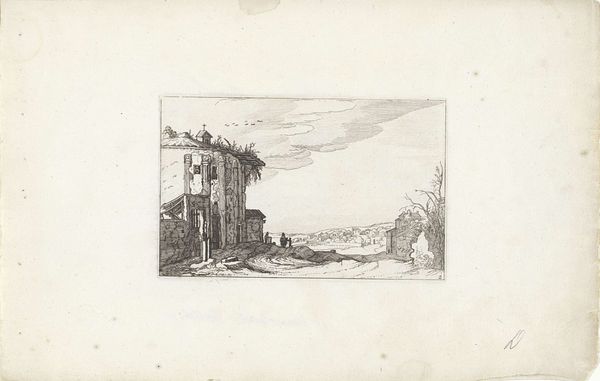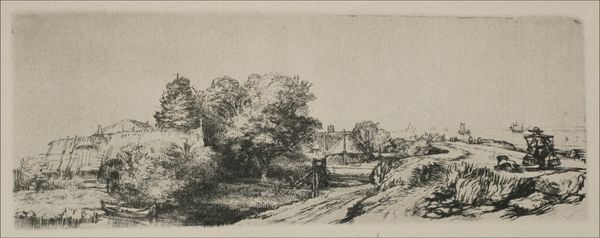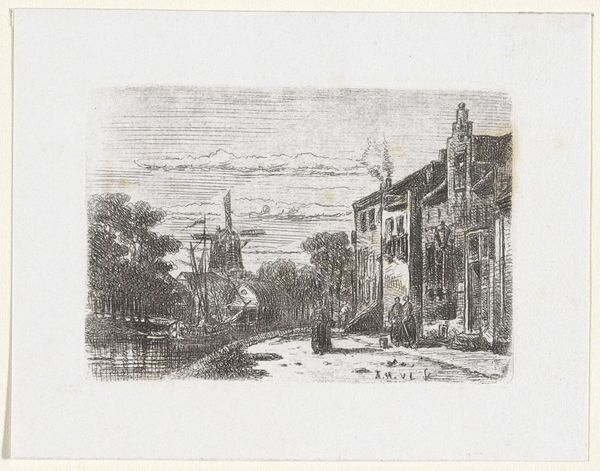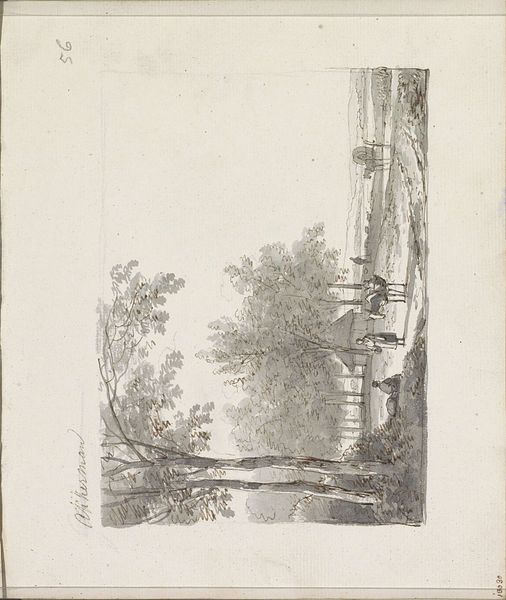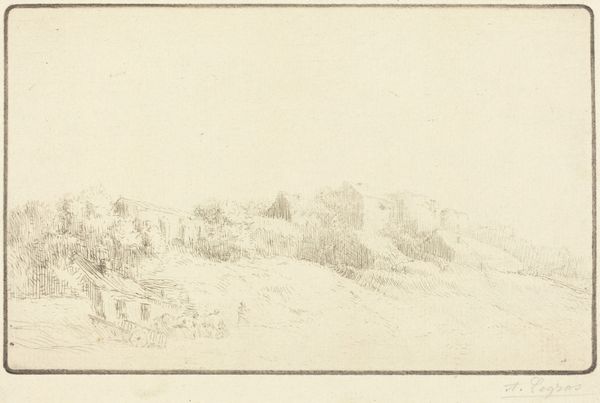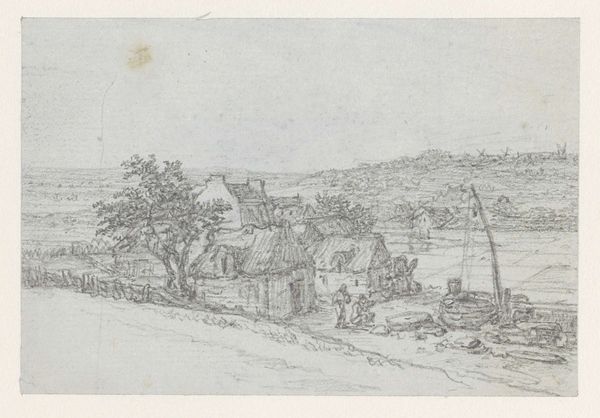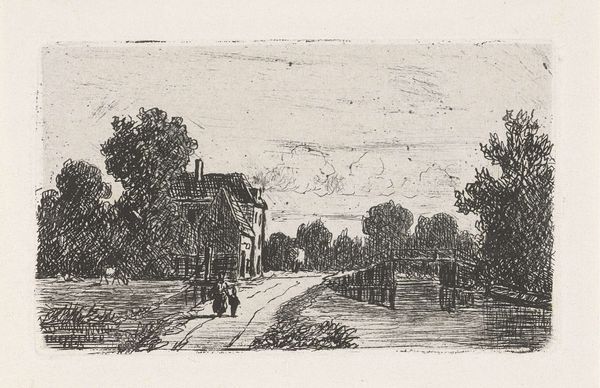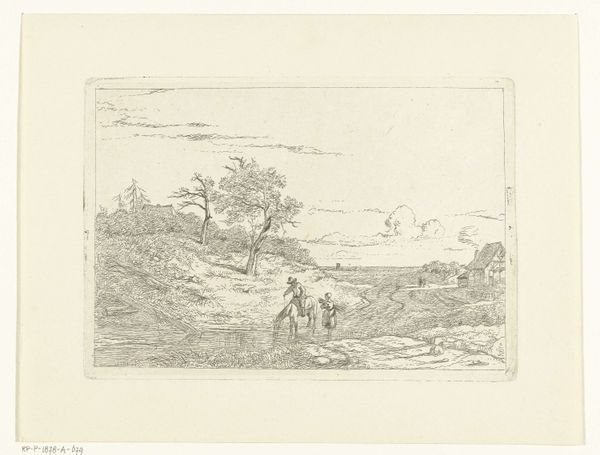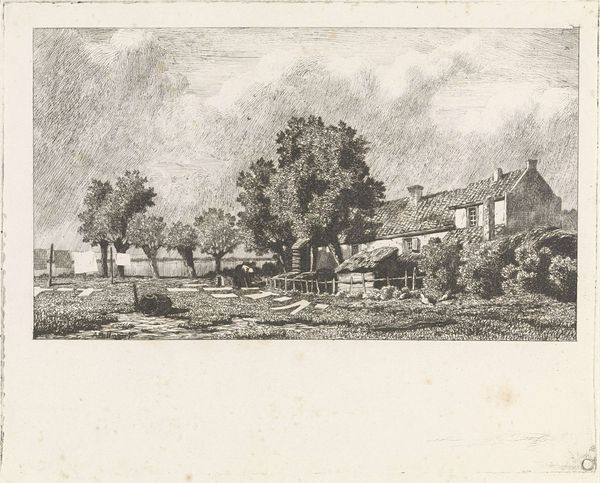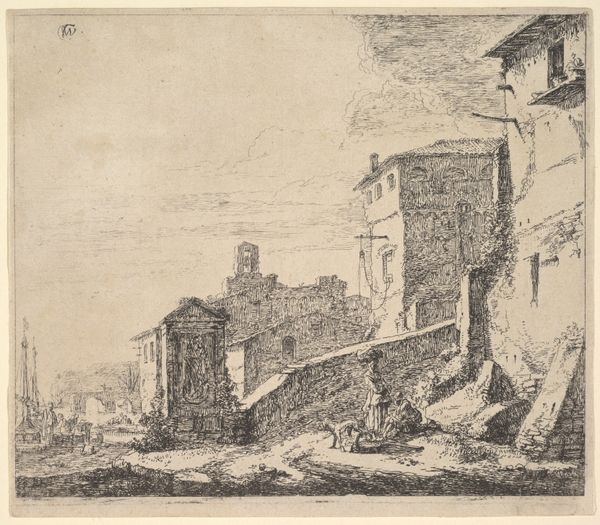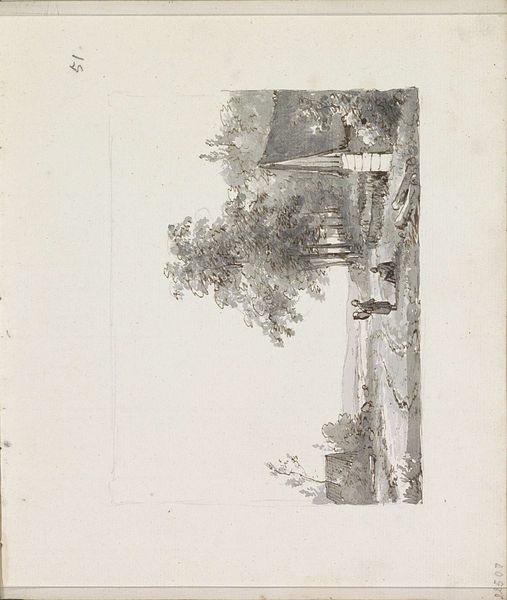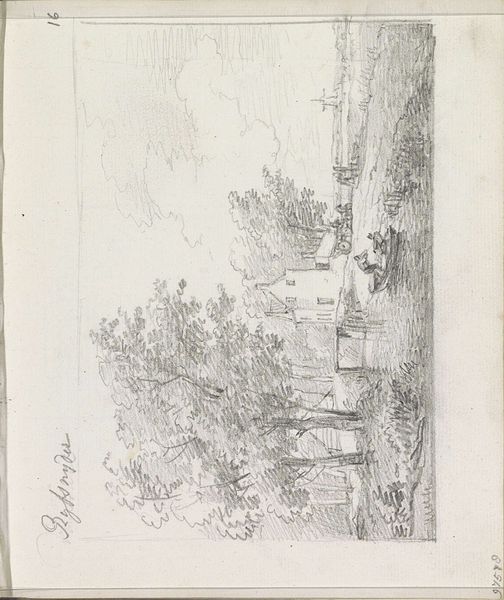
drawing, ink, pencil
#
tree
#
drawing
#
light pencil work
#
quirky sketch
#
impressionism
#
sketch book
#
landscape
#
personal sketchbook
#
ink
#
idea generation sketch
#
sketchwork
#
pen-ink sketch
#
pencil
#
sketchbook drawing
#
storyboard and sketchbook work
#
sketchbook art
Dimensions: height 62 mm, width 65 mm
Copyright: Rijks Museum: Open Domain
Curator: I see a lone tree against the backdrop of what looks like a village. It has a brooding feeling—maybe melancholic, definitely something pensive in those swirling lines. Editor: We're observing "Landscape with a Row of Trees and Houses," attributed to Isaac Weissenbruch and dated from 1836 to 1912. What strikes me is its unpretentious character, existing as a pencil and ink sketch now housed here at the Rijksmuseum. These sketchbook pieces allow the possibility to engage with Weissenbruch’s study of landscape and its inhabitants on a more intimate level. Curator: Intimate indeed. There's a rough beauty, like finding a lost page from someone's journal. The lack of detail somehow says more. What stories could this little village tell? Or that wonky looking house—almost feels like a face, peering back at us! Editor: The roughness speaks, I think, to a quickness of hand, perhaps capturing a transient moment or atmosphere, especially given the time when industrialisation meant landscapes were rapidly changing. What could it mean to capture, as Weissenbruch did, what was slowly, or not so slowly disappearing? Curator: It’s the idea of loss that really strikes me, though loss might also be a stand in for longing. Those humble rural landscapes became deeply valued—the Dutch countryside, as symbol, could be politically potent when imagining an authentic identity distinct from modern urban experience. Editor: So, are you suggesting that through a contemporary theoretical lens we can consider this sketch not merely as a picturesque scene, but also a coded commentary on industrial progress and social change? The drawing invites these dialogues precisely because of its ambiguous incompleteness. Curator: Exactly. It raises questions about the meaning of progress, who benefits, and what gets left behind—it all lives in this deceptively simple sketch. Editor: Yes, the tree is not just a tree. Curator: The tree is not just a tree; the village not just a village! It gives one a lot to reflect on with just a few sketched strokes. Editor: I will think about sketchbooks differently now. Thanks for that expanded insight.
Comments
No comments
Be the first to comment and join the conversation on the ultimate creative platform.
